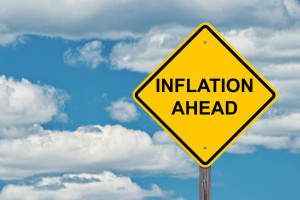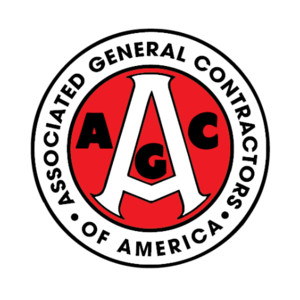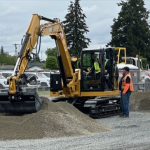Are inflationary pressures a danger to the commercial building sector?
 Are you a contractor or construction professional watching the news wondering how inflation is going to impact the sector that pays your bills? With inflation hitting a 40-year high, uncertainty is everywhere. What’s ahead for the construction sector and how can you prepare? Let’s take a look at where we were and how we got here.
Are you a contractor or construction professional watching the news wondering how inflation is going to impact the sector that pays your bills? With inflation hitting a 40-year high, uncertainty is everywhere. What’s ahead for the construction sector and how can you prepare? Let’s take a look at where we were and how we got here.
First, consider the first quarter of 2020. Construction activity of all types was in record territory. It wasn’t until around May that the floor dropped out of the construction industry. The pandemic pretty much stopped all construction starts in their tracks, but that total stoppage was temporary. Almost all jobs that had been delayed are back online now, which created new problems.
Construction companies must now learn how to balance lean inventory with scarcity in materials and issues in the supply chain. While some believe we could see a bit of supply chain relief in Q3 of this year, nothing is guaranteed. Construction companies must ensure they order materials for each project well in advance of when they will need those materials. Take steel as one example. With the price only going up, procurement professionals should not wait to put in their bids.
Not only is the cost of materials going up, but the delivery of materials is also affected. Companies are already expecting delays in design development and supply delivery. It is important to consider how far in advance materials must be purchased so that they will be delivered on time and not increase further in price before they arrive.
Construction companies and contracting professionals must take a lean approach to manage their job. There should be a lot of planning in the project schedule. Still, difficulties will remain. Even if the supply chain loosens up a bit before the end of 2022, few expect inflationary pressures to die down anytime soon.
Fortunately for commercial builders, inflation is much higher for residential than for non-residential construction. Some predict residential inflation to be between 7% and 8% while the non-residential sector could see somewhere between 3% and 4%. In the non-residential sector, you have a few things happening. The PPI for material inputs is up 12% over the same period last year.
Yet, inflation remains relatively under control because everyone is taking a bit off the margins. From the owner to the subcontractor, builder, vendors, and more, the commercial building sector is weathering inflationary pressures far better than the residential sector, where homes are still selling like hotcakes and builders are clamoring for materials. The takeaway? While inflation remains a concern, commercial builders have not born the worst of it and it doesn’t look like they will through the rest of 2022.








